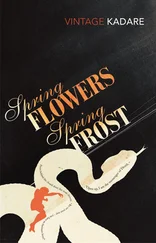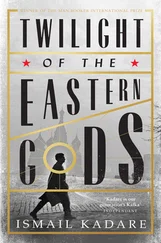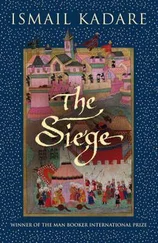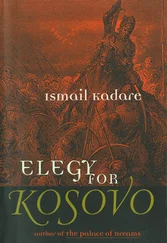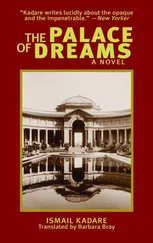1 ...7 8 9 11 12 13 ...16 Can you imagine? My legs were tied to prevent the wound from opening, I was lying on a dirty and cold cement floor, and the urine wouldn’t come. They poured cold water on my feet to make me go, which eventually worked but it stung like crazy. I screamed and tried to halt the flow, but they told me, ‘Don’t stop. You’ve got to keep going.’
I didn’t believe them so, in what felt like a new form of torture, they kept pouring cold water on my feet to make me start again, and then I longed to empty my bladder completely so that I would never have to endure the pain again. At that point, I also wanted to never drink anything again even though I was so thirsty, because I now knew what fresh agonies a full bladder would bring. Little did I know then that the more concentrated the urine is the more it hurts, so drinking more water would have made it less painful, but nobody told me that.
Just like millions of Somali girls before me and since, I went from one day to the next in my little room, separate from the world and from humanity. Every day, I heard women from the neighbourhood drop in to tell my mother, ‘Congratulations, Marian, your daughter has been purified.’ What they were purifying an eight-year-old girl from I have no idea. In time, I grew accustomed to turning over gently and to urinating, even though it still hurt horribly. After seven days, the women undid the bindings from my legs and slowly parted them, causing fresh pain. They removed the thorns to see if the wound had fused together, and thank goodness it had – probably thanks to my father’s medications. Then they tied my legs together again to keep it from coming undone. They got me to stand up, still bound, and helped me to move about a little one baby step at a time. I felt very dizzy – I had lost a lot of blood and had been lying down for a week. One thing I still remember vividly was the horrible smell of sweat, urine and dried blood that emanated from me, as I hadn’t washed for ten days. And this was called purification?
The women who were minding me kept saying, ‘ Inan baad tahay, Edna’, which means, ‘You are a young woman now.’ I was no longer an aruur , a child. By this they meant that I had been prepared and was ready to be considered for marriage, even though in our culture girls do not generally marry until they are around fifteen (although there are exceptions). As a ‘cleansed’ virgin, I would be trained to be shy and obedient, respectful and domesticated – the perfect Somali wife.
Eventually the wound mended some more and I was allowed to gently wash myself. They let me sit up, took off my leg bindings and helped me to take a shower. They told me I was healed. Psychologically, I was far from healed. Only then did I understand why the other girls in the neighbourhood had disappeared for three or four weeks and had emerged pale and silent. Just as they must have been, I was terrified that the wound would reopen. Feeling completely alone, I didn’t want to see anyone or go out. When I eventually ventured outside, the neighbourhood women constantly reminded me, ‘Watch out, don’t do too much because if it comes undone we will have to do it again.’ You can bet I was careful after that.
Tomboy Edna who’d been such a carefree, rebellious kid had gone for ever. In her place was a frightened little girl who was instructed not to talk about what had happened, which only made me more aloof. While my friends of both genders were playing and singing, laughing and joking, I felt so different. Every time I walked, sneezed or coughed, I remembered the warning that filled me with dread: ‘We will have to do it again.’
My grandmother Clara had always been such a comfort and an ally to me, so I longed to see her and have her hold and reassure me, but she was in Borama. By the time she came to visit, my wound had healed and I was already indoctrinated into never speaking about what had happened to me. Later I came to understand that Clara too would have considered my mutilation to be completely normal. From that day on, I regarded all the women in my family with something akin to suspicion, even contempt. They had conspired against me, lied, and disfigured me permanently. How could I ever forgive them?
***
I have never written or spoken about my own experience with female circumcision in any detail before. It isn’t easy, but it is time because this mutilating trauma has to stop. Every Somali woman has to live with the memory and then with the physical consequences. It remains with you for life.
Of course the wound heals and gradually you learn to behave normally again. Eventually even the fear that something might happen to undo it subsides. But it takes years to trust people again, or to grow accustomed to the new way of living and urinating. Many teenagers suffer frequent infections and pain. Some even need surgery while menstruating because of blockages, and this has to be done in a certain way and then be certified to prove that the girl’s virginity is still intact or she and her family will be dishonoured.
I knew what had been done to me was wrong, but I had no idea what to do about it. Almost every female I knew had gone through the same experience, and virtually everyone younger than me was going to have it done. It took me decades to pluck up the courage to ask questions about the practice, and many more years before I decided to speak out against it.
I wanted to know where and how it started and was astonished to discover that this paganistic ritual pre-dates Islam and Christianity, going back to the fifth century BC and the time of the Pharaohs. In some countries, it is still referred to as ‘Pharaonic circumcision’.
The River Nile is the lifeblood of Egypt and the story goes that the god of the river was considered to be the most powerful, and had to be appeased. The most beautiful virgins were chosen for sacrifice and thrown into the river to drown. It was considered an honour to the family of a girl to be so favoured by the Pharaoh in order to ensure the survival of her people and the punishment for refusal was severe. If the river ever dried out or flooded the fields then it was presumed that the girl chosen hadn’t been a true virgin, which had somehow angered the god. To ensure that all future ‘gifts’ would be appropriate, girls were circumcised and sutured and taken to the temples to be guarded by eunuchs until it was time for them to be killed. In time, the practice was adopted as an initiation ceremony by most of the people who lived along the Blue Nile, which rises in Ethiopia and flows north to Egypt and the Mediterranean Sea, joining the White Nile from Burundi. The custom travelled across the equatorial belt through the Nubian tribe to the Ethiopians, the Sudanese, the Somalis, and sixteen other countries in Africa as well as a few in Asia. Female circumcision is largely an accident of geography.
Later, slave traders adopted its use to keep their female ‘goods’ from getting pregnant (they also earned more money for virgins), and nomadic herders also accepted the tradition for population control or to ‘protect’ their women from rape. It is still widely practised by African Muslims, as well as non-Muslims, west of the Red Sea and the Arabian Sea, as far south as parts of Kenya and Tanzania. In some instances it is the local blacksmith who performs the cutting rather than a birth attendant. Nations on the other side of those two seas don’t do it at all, or only so that it sheds a symbolic drop of blood. In truth, it is not a religious obligation required by any faith, but primarily a cultural tradition from a time when people believed in river gods.
Thanks to ignorance and fear, female circumcision is now a widespread practice that is still carried out on an estimated three million girls between the age of five and ten every year. In my country it is estimated that the most severe form, as practised on me, affects 76 per cent of the female population, a trend that is down from the 100 per cent of my youth and the 98 per cent prevalence we found two decades ago. Because of migration, the practice is also emerging among the refugee communities of Europe and North America, and British hospitals currently treat around 9,000 cases every year.
Читать дальше



